Reviews
The Oslo Biennale, Which Will Unfold Across the City Over Five Years, Reimagines What Public Art Can Be
The inaugural edition of the biennale highlights ephemeral art in a changing city.
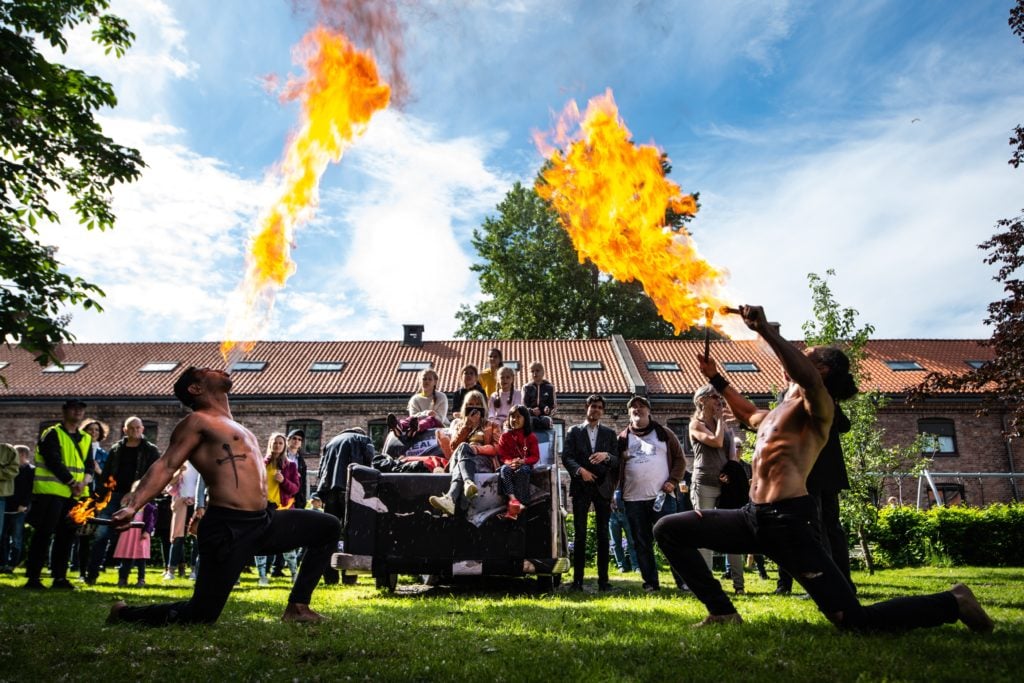
The inaugural edition of the biennale highlights ephemeral art in a changing city.

Hili Perlson

The city of Oslo is under construction. It’s in the midst of building a mammoth new National Museum that will centralize its public collections starting in 2020, and the center—which stretches from the landmark-studded waterfront to the government quarter, damaged in the 2011 bombing by a right-wing domestic terrorist—is undergoing a major restructuring to improve urban security. This includes the implementation of smart-city technologies, such as cameras that communicate with each other for targeted surveillance, as well as heavy-duty bollards that now line pedestrian areas and construction sites to protect against car-ramming attacks.
Nothing about this creation of controlled public zones and crowd management is unique to Oslo—indeed it has been happening in cities all over the world—but the city’s Agency for Cultural Affairs launched the Oslo Biennale, which opened its inaugural edition on May 25, with the express aim of exploring art in this changing public space.
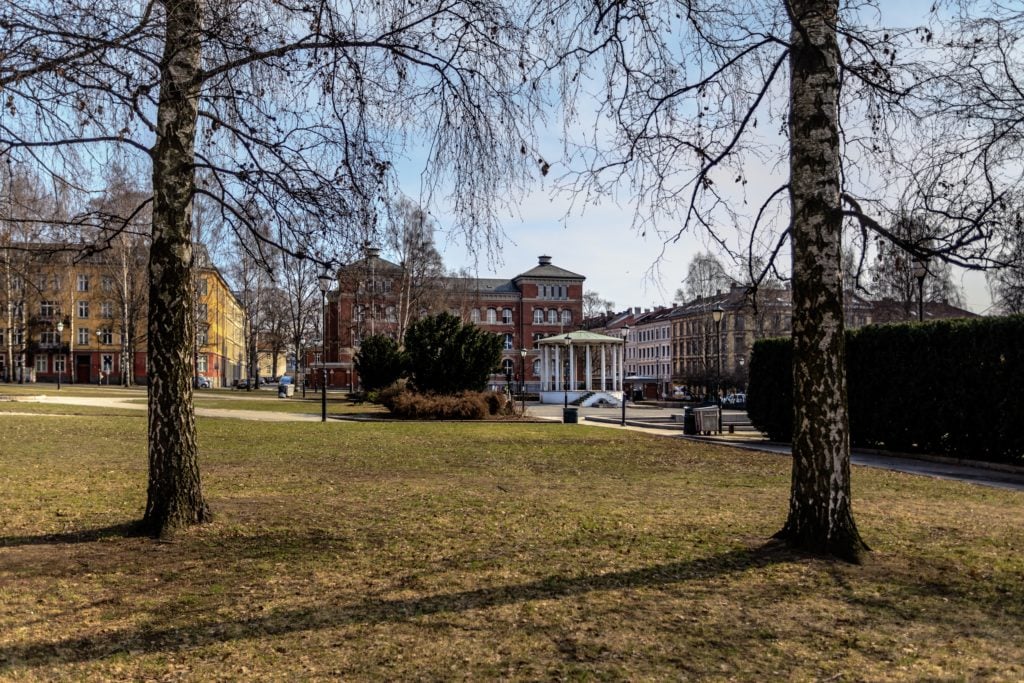
The Oslo Biennale’s first edition. Photo: Niklas Lello/© Oslo Biennale.
Much of the work in this first chapter of the biennial—the second opens in October—is ephemeral, itinerant, and, at times, almost imperceptible.
“We cannot talk about audiences when we talk about art in public space. We talk instead about passersby,” said biennial co-curator Eva González-Sancho. “We’re not asking people to look for a work, but ask instead how can people have an encounter with the works.” She stressed that rather than acting as a mere backdrop, the city becomes artistic material.
French artist Carole Douillard’s The Viewers, in which a group of performers suddenly conjoin and stand still for a duration of time, will appear at 11 different locations across the city, including on government square, in front of a wing of a building slated for demolition after the terror attack (a plan complicated by the fact that it bears a 1970s Picasso mural, The Fishermen). The context shifts with locale and the audience’s reaction; in front of the endangered Picasso mural it will “read like an accusation or protest,” says Per Gunnar Eeg-Tverbakk, who co-curated the biennial together with González-Sancho.
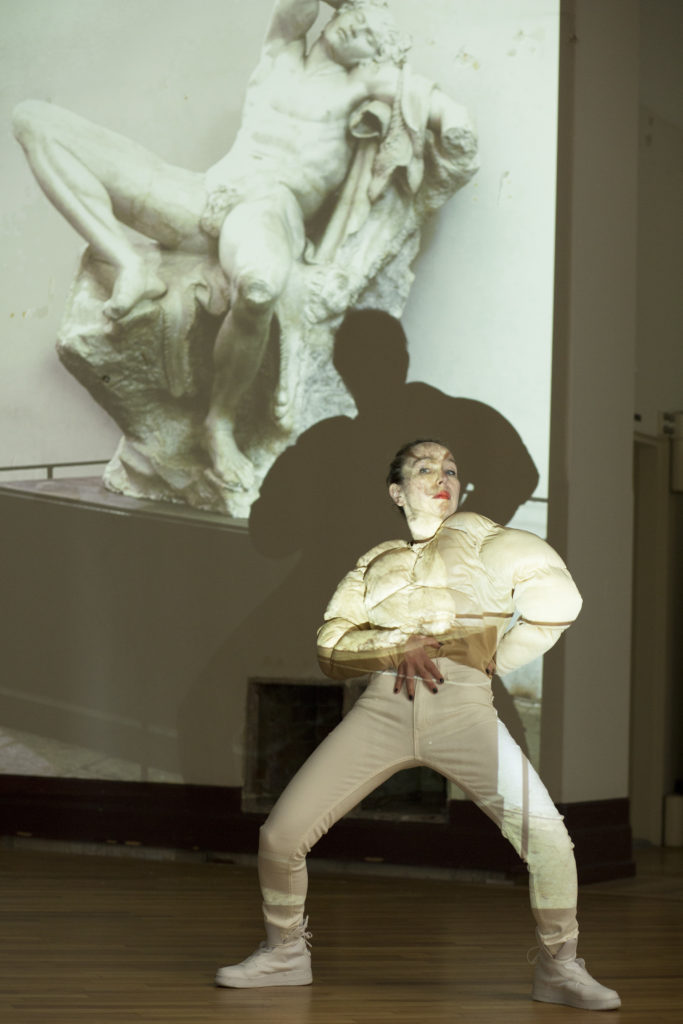
Marianne Heier, And Their Spirits Live On, performed during the 2019 opening program. Photo: Kristine Jakobsen/© Oslo Biennalen.
Other works are fixed to a location, like Øystein Wyller Odden’s composition for the organ at the Oslo city hall, Power Line Hum, which plays every day between 3:45 and 4 p.m. Meanwhile, American monochrome painter Gaylen Gerber is showing a two-part work, an installation of gray-painted found objects inside the studio of Edvard Munch, as well as in the city center, where he painted a German barracks, an unmarked remnant of the Nazi occupation of Norway, the same deep gray one usually finds on museum walls.
British artist Ed D’Souza’s project Migrant Car is a wooden life-size model of the Hindustan Ambassador, a discontinued model popular in India. The sculpture, created at a local workshop, is covered in a print of a car wreck. On opening weekend, it was carried through Oslo’s city center, soon to be a car-free zone. It will continue to travel throughout the summer, including at a church during a sermon on the importance of welcoming migrants, in Oslo’s Pride parade, and then north to the Russian border.
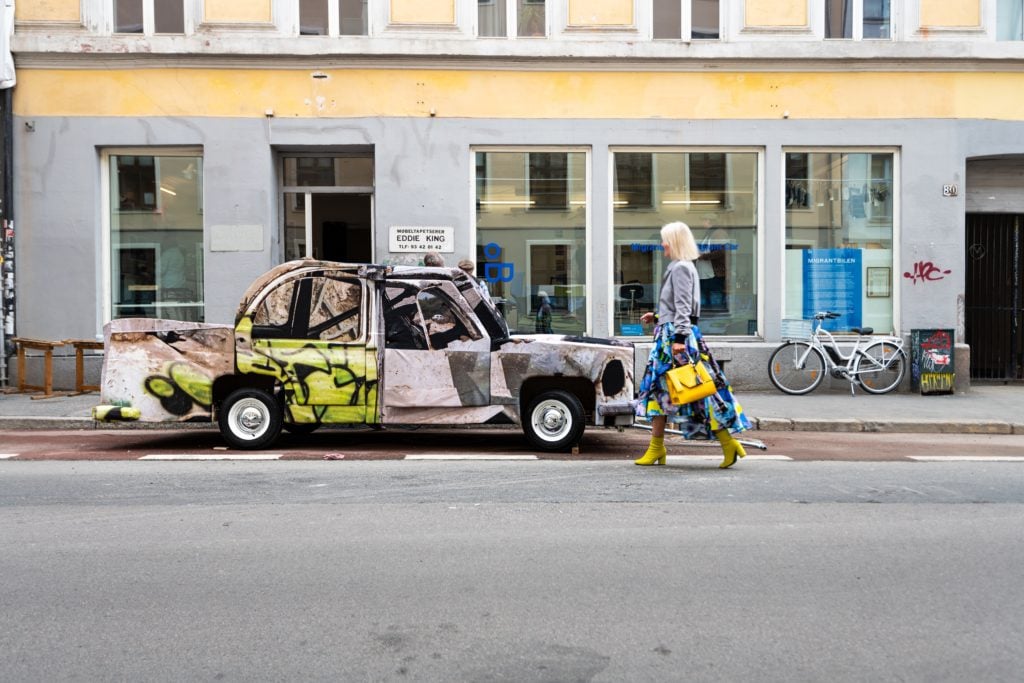
Ed D’Souza’s Migrant Car parked in front of Eddie King’s Furniture and Upholstery Workshop in Grünerløkka, Oslo. Photo: Niklas Hart, Hartwork/© Oslo Biennalen.
The city came up with the idea for the Oslo Biennial in 2013, with a brief specifying only the focus on public art. At the end of a two-year research project called the Oslo Pilot, a preliminary phase of the biennial, the curators made some adjustments to the brief. First, “public art” became “art in public space,” a tweak necessitated by the fact that art in Norway’s state-run institutions is paid for and owned by the public, making it all “public art.”
Similarly, no private money funded the Oslo Biennale. It is financed by the city’s Investment Funds, where .5 percent of all investments in infrastructure are allocated to the purchase and maintenance of art in public space. That means that the biennial’s 2019 budget of NoK 25 million ($2.88 million) didn’t take any funding away from other institutions, but instead used allocations collected over the past few years.
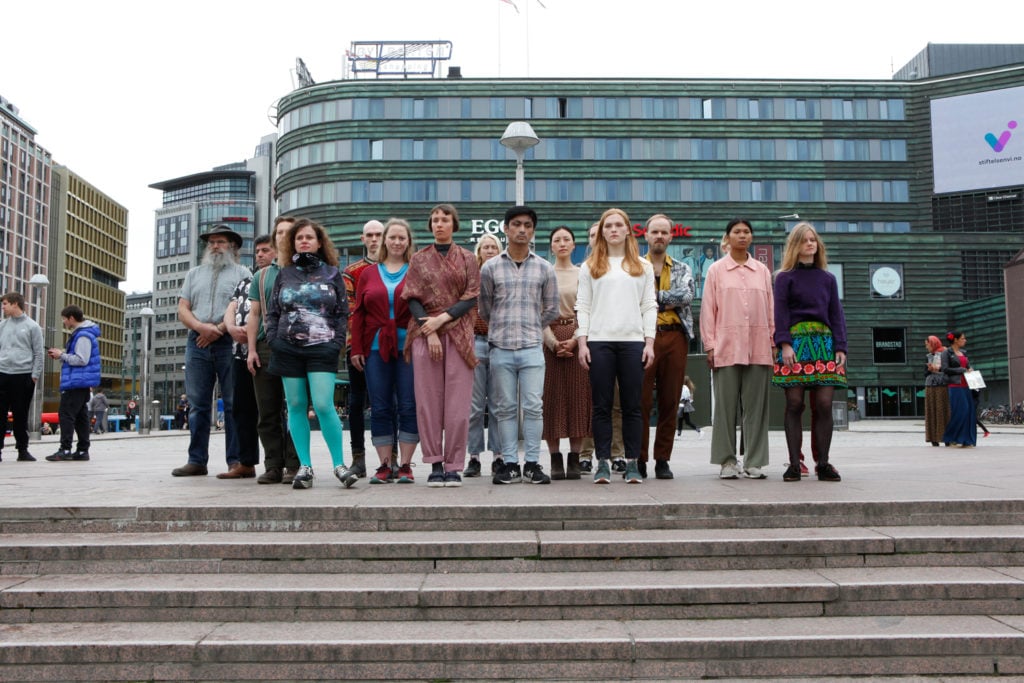
Carole Douillard’s The Viewers at Oslo Central Station. Photo: Inger Marie Grini/ © osloBIENNALEN.
Despite its name, the Oslo Biennale isn’t technically a biennial. The first edition will actually extend over a five-year period, ending in 2024. Works for the next phase, in October, are already defined, though plans for the subsequent years are still in the making, and the overall budget will balloon accordingly. Some works will last the entire duration, some will evolve.
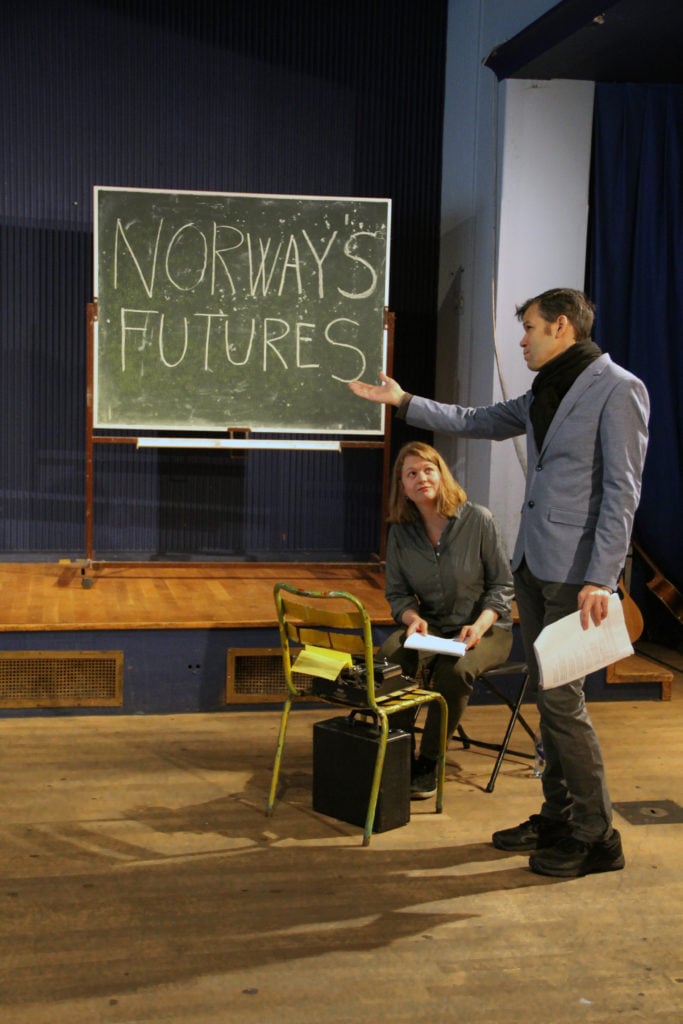
Rehearsal of “National Episodes: Grini and the Futures of Norway” by Rose Hammer. Courtesy of the artist.
Calling the event a biennial was more about “a short-hand communication,” said Shwetal Ashvin Patel, an advisor for institutional relations at the Oslo Biennale. He added that the first edition may last five years, but after that, it’s up to the next curators to decide. “That’s the defining thing about this project, the conceptual turn—to think of time-scale in a completely new way.”
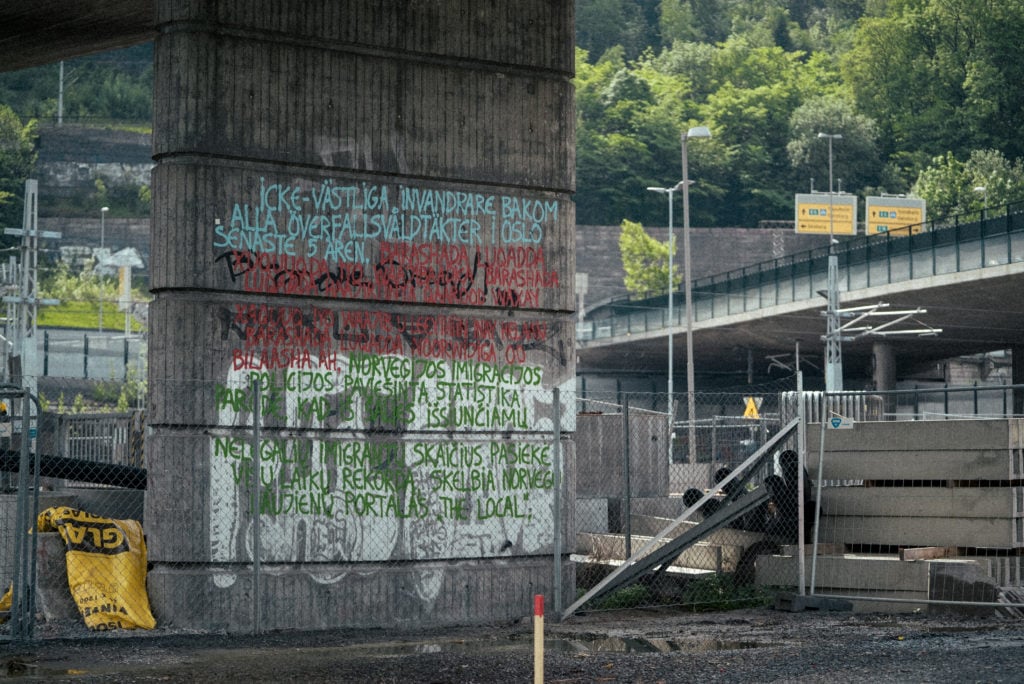
Installation view of Immigrants in Oslo from “Seven Works for Seven Locations” by Hylnur Hallsson. Photo: Mark Brydin, Lumopolar/© Oslo Biennalen
So far the Oslo Biennale is more like the regional, performance-focused Public Art Munich than an international exhibition such as Skulptur Projekte Münster. And rather than attracting tourism, the city’s interest here is to reach locals. “I don’t think you should strive to make visiting audience your primary goal,” said the biennale’s director, Ole Giskemo Slyngstadli. “We’re using public money, and public space.”
It’s also a kind of public-service announcement reminding Norwegians of the approximately 20,000 works of art scattered around the city’s squares, schools, fire stations, many of which have been forgotten by the public who paid for them. The biennial will raise awareness about how the collection came to be, and why. And if an international visitor discovers the city through its art, that’s not a bad thing either.